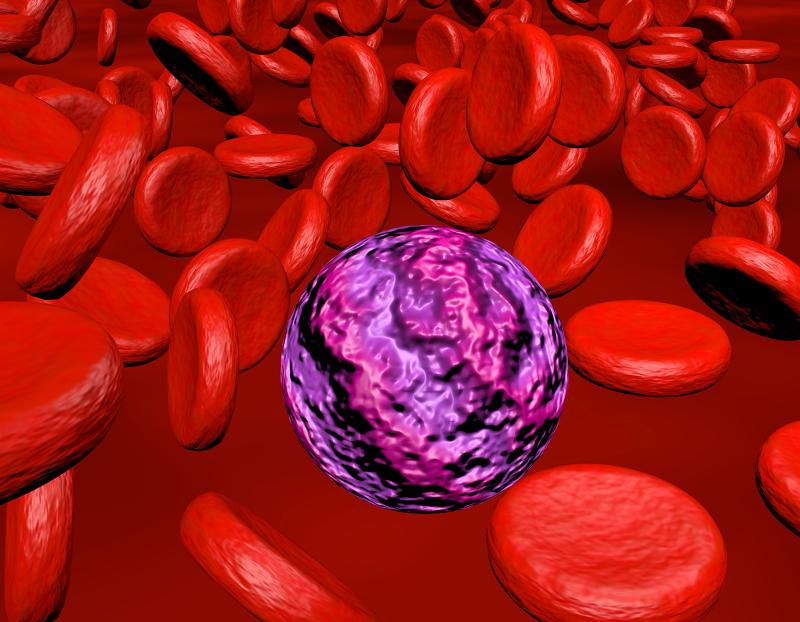
In patients with chronic myeloid leukaemia (CML) in chronic phase (CP) who have not achieved molecular response with first-line imatinib at 3 months, early switching to dasatinib increases the chances of achieving major molecular response (MMR) at 12 months, according to data from the phase IIb DASCERN trial.
DASCERN included CML-CP patients who had achieved complete haematologic response (CHR) but had BCR-ABL1 >10 percent 3 months after starting first-line treatment with imatinib 400 mg once daily. A total of 260 patients (median age, 37 years; 78 percent male; 73 percent Asian) were randomized to receive 100-mg dasatinib (n=174) or continue imatinib at ≥400 mg (n=86).
Sokal scores were evenly distributed (low, 28 percent; intermediate, 30 percent; high, 24 percent; unknown, 18 percent). Most patients (84 percent) had an ECOG performance status of zero, and all had b2a2 (e13a2) or b3a2 (e14a2) transcripts.
The primary endpoint of MMR at 12 months occurred more frequently in the dasatinib arm (29 percent vs 13 percent; p=0.005). After ≥2 years of follow-up, 45 patients (52 percent) in the continued imatinib group had crossed over to dasatinib.
Taking into account the treatment crossover, the cumulative MMR rate at 2 years was 64 percent with dasatinib and 41 percent with imatinib (66 percent and 67 percent, respectively by intent-to-treat).
Adverse events (AEs) were consistent with the established safety profiles of dasatinib and imatinib. Grade 3/4 treatment-related AEs occurred in 35 percent and 42 percent of patients, respectively, while serious AEs (of any grade and cause) occurred in 19 percent of patients in each treatment arm.
The present data support early monitoring of patients treated with first-line imatinib and suggest that early switching to dasatinib in cases of inadequate response may offer clinical benefit, researchers said. Further investigation is needed to assess the long-term safety and effect of early switching.